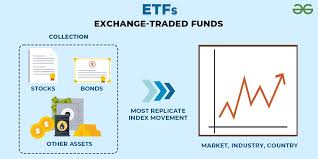In the world of finance, short-term investments are prized for their potential to deliver quick returns. Whether you’re looking to diversify your portfolio or capitalize on rapid market opportunities, understanding and employing effective short-term investment strategies is key. This guide will walk you through some of the best short-term investment strategies for quick returns, offering insights on how to make the most of your capital in a short period.
1. High-Yield Savings Accounts

Overview: High-yield savings accounts (HYSA) offer a safe place to park your money while earning a competitive interest rate compared to traditional savings accounts. These accounts are ideal for those looking for low-risk, short-term returns.
Why Consider It: HYSA provides liquidity and minimal risk while offering better interest rates. It’s perfect for those who need quick access to their funds but still want to earn some interest.
Key Benefits:
- Safety: Insured by the FDIC (in the U.S.), protecting your principal.
- Liquidity: Easy access to funds with minimal withdrawal restrictions.
- Interest Rates: Higher than traditional savings accounts.
Considerations:
- Interest Rate Fluctuations: Rates can vary based on market conditions.
- Inflation Impact: Interest may not always keep pace with inflation.
2. Certificates of Deposit (CDs)
Overview: Certificates of Deposit (CDs) are time deposits offered by banks with fixed interest rates for a specific term. Short-term CDs, typically ranging from three months to one year, can offer attractive returns with minimal risk.
Why Consider It: CDs are low-risk investments that provide guaranteed returns. They’re a good choice if you’re looking to lock in a rate for a short period.
Key Benefits:
- Guaranteed Returns: Fixed interest rates provide predictable earnings.
- Safety: Insured by the FDIC (in the U.S.), protecting your principal.
- Flexibility: Various term lengths to match your investment horizon.
Considerations:
- Early Withdrawal Penalties: Withdrawals before maturity can incur penalties.
- Inflation Risk: Fixed rates might not outpace inflation.
3. Short-Term Bonds
Overview: Short-term bonds, or bonds with maturities of one to three years, can offer attractive yields while exposing investors to lower interest rate risk compared to long-term bonds. They can be issued by governments or corporations.
Why Consider It: Short-term bonds offer stability and income, making them suitable for those seeking quick returns with moderate risk.
Key Benefits:
- Lower Volatility: Less sensitive to interest rate changes than long-term bonds.
- Regular Income: Provides periodic interest payments.
- Diversification: Adds variety to your investment portfolio.
Considerations:
- Credit Risk: Corporate bonds carry more risk compared to government bonds.
- Interest Rate Risk: Even short-term bonds can be affected by rate changes.
4. Stock Trading and Day Trading
Overview: Stock trading, particularly day trading, involves buying and selling stocks within short periods—often within the same trading day. This strategy aims to capitalize on short-term price movements and market fluctuations.
Why Consider It: Day trading can yield significant profits in a short time if executed well. It’s ideal for those with a high risk tolerance and a keen understanding of market trends.
Key Benefits:
- High Return Potential: Possibility of substantial gains within a short time.
- Flexibility: Ability to quickly react to market changes.
- Liquidity: Stocks are highly liquid, allowing for quick entry and exit.
Considerations:
- High Risk: Significant risk of losses, requiring careful risk management.
- Requires Expertise: Success depends on market knowledge and timing.
- Transaction Costs: Frequent trading can lead to high transaction fees.
5. Exchange-Traded Funds (ETFs)

Overview: ETFs are investment funds traded on stock exchanges, holding a diverse portfolio of assets such as stocks, bonds, or commodities. Short-term ETFs can be used to gain exposure to specific sectors or indices for quick returns.
Why Consider It: ETFs offer diversification and flexibility, allowing investors to target specific market segments or strategies for short-term gains.
Key Benefits:
- Diversification: Exposure to a broad range of assets within a single investment.
- Liquidity: Traded on exchanges, providing ease of buying and selling.
- Cost-Efficiency: Typically lower fees compared to mutual funds.
Considerations:
- Market Risk: Subject to market fluctuations and sector-specific risks.
- Tracking Error: ETFs might not always perfectly track their underlying indices.
6. Peer-to-Peer (P2P) Lending
Overview: Peer-to-peer lending platforms connect borrowers with individual investors, offering an opportunity to lend money for short periods at potentially higher interest rates than traditional savings methods.
Why Consider It: P2P lending can provide higher returns compared to traditional savings or investment vehicles, although it involves higher risk.
Key Benefits:
- Higher Returns: Potential for higher interest rates than traditional savings accounts.
- Diversification: Adds a different asset class to your investment portfolio.
- Impact: Opportunity to support small businesses or individuals.
Considerations:
- Credit Risk: Risk of borrower default can impact returns.
- Platform Risk: Risk associated with the platform’s reliability and management.
7. Real Estate Crowdfunding
Overview: Real estate crowdfunding allows investors to pool funds to invest in real estate projects or properties. Short-term real estate investments can offer attractive returns through rental income or property appreciation.
Why Consider It: Real estate crowdfunding offers a way to invest in real estate without the need for significant capital, with the potential for short-term gains.
Key Benefits:
- Access to Real Estate: Opportunity to invest in real estate with lower capital.
- Potential Returns: Can offer attractive returns from rental income or property sales.
- Diversification: Adds real estate exposure to your investment portfolio.
Considerations:
- Property Risk: Risks associated with property management and market conditions.
- Platform Fees: Fees may reduce overall returns.
- Liquidity: Investments might be less liquid compared to other assets.
8. Treasury Bills (T-Bills)
Overview: Treasury bills (T-Bills) are short-term government securities with maturities ranging from a few days to one year. They are considered one of the safest investments and are issued at a discount to face value.
Why Consider It: T-Bills provide a safe and predictable return, making them ideal for short-term investments.
Key Benefits:
- Safety: Backed by the U.S. government, minimizing default risk.
- Short-Term Maturity: Various maturities to suit your investment horizon.
- Predictable Returns: Issued at a discount, providing a guaranteed return at maturity.
Considerations:
- Lower Yields: Generally offer lower returns compared to other investments.
- Inflation Risk: May not keep pace with inflation over time.
9. Short-Term Mutual Funds
Overview: Short-term mutual funds invest in short-duration bonds or other low-risk assets. They are designed to provide better returns than savings accounts while maintaining relatively low risk.
Why Consider It: These funds are ideal for conservative investors looking for short-term returns with minimal volatility.
Key Benefits:
- Diversification: Invests in a variety of short-term securities.
- Professional Management: Managed by professionals to optimize returns.
- Liquidity: Typically allows for easy access to funds.
Considerations:
- Fees: Management fees can impact overall returns.
- Yield Variability: Returns may vary based on market conditions.
10. Commodity Trading

Overview: Commodity trading involves buying and selling raw materials like gold, oil, or agricultural products. Short-term commodity trading can be lucrative due to price volatility driven by market factors.
Why Consider It: Commodity trading offers the potential for significant returns based on market fluctuations and demand-supply dynamics.
Key Benefits:
- High Return Potential: Opportunities for substantial gains with market movements.
- Diversification: Exposure to different asset classes.
- Hedge Against Inflation: Commodities can act as a hedge against inflation.
Considerations:
- Volatility: High risk due to market volatility and price swings.
- Complexity: Requires a good understanding of market dynamics and trends.
Conclusion
Short-term investment strategies can offer a pathway to quick returns, each with its own risk profile and potential benefits. From safe options like high-yield savings accounts and CDs to more dynamic strategies such as stock trading and real estate crowdfunding, the key is to align your investment choices with your risk tolerance, time horizon, and financial goals. By diversifying your investments and staying informed about market trends, you can optimize your chances for achieving favorable short-term returns.


